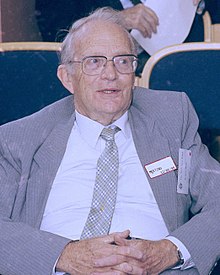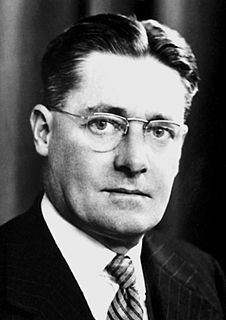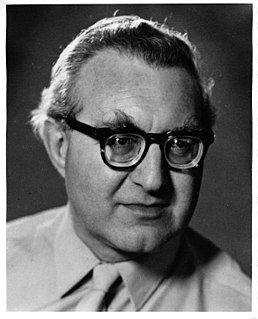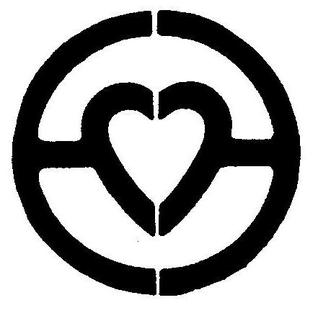Peter Doyle | |
|---|---|
 Doyle in May 1998 | |
| Born | Frank Peter Doyle 1921 |
| Died | 2004 (aged 82–83) |
| Occupation | Research chemist |
Peter Doyle | |
|---|---|
 Doyle in May 1998 | |
| Born | Frank Peter Doyle 1921 |
| Died | 2004 (aged 82–83) |
| Occupation | Research chemist |
Doyle obtained his degree from the University of London in 1944. [1] In 1952 he obtained a position at Beecham Laboratories in Betchworth, and became Director of Research at Beecham Pharmaceuticals in 1962. [2]
Along with Ralph Batchelor, George Rolinson, and John Nayler, he was part of the team at Betchworth that discovered and synthesised new penicillins. [2] [3] A Royal Society of Chemistry blue plaque now marks this discovery. [2] Doyle retired in 1983. [2]
Doyle was given the Worshipful Society of Apothecaries' Gold Medal in Therapeutics in 1964 (awarded jointly with Dr. G N Rolinson). [2]
In 1971, he was among a group awarded the Royal Society's Mullard Medal. [2]
He was made an Officer of the Order of the British Empire (OBE) in 1977 "for services to the pharmaceutical industry". [2] [4]

Sir Alexander Fleming was a Scottish physician and microbiologist, best known for discovering the enzyme lysozyme and the world's first broadly effective antibiotic substance which he named penicillin. He discovered lysozyme from his nasal discharge in 1922, and along with it a bacterium he named Micrococcus Lysodeikticus, later renamed Micrococcus luteus. His discovery of what is later named benzylpenicillin from the mould Penicillium rubens in 1928, is described as the "single greatest victory ever achieved over disease." For this discovery he shared the Nobel Prize in Physiology or Medicine in 1945 with Howard Florey and Ernst Boris Chain.

Penicillin is a group of antibiotics, derived originally from common moulds known as Penicillium moulds; which includes penicillin G, penicillin V, procaine penicillin, and benzathine penicillin. Penicillin antibiotics were among the first medications to be effective against many bacterial infections caused by staphylococci and streptococci. They are still widely used today, though many types of bacteria have developed resistance following extensive use.

Howard Walter Florey, Baron Florey, was an Australian pharmacologist and pathologist who shared the Nobel Prize in Physiology or Medicine in 1945 with Sir Ernst Chain and Sir Alexander Fleming for his role in the development of penicillin.

Clavulanic acid is a β-lactam drug that functions as a mechanism-based β-lactamase inhibitor. While not effective by itself as an antibiotic, when combined with penicillin-group antibiotics, it can overcome antibiotic resistance in bacteria that secrete β-lactamase, which otherwise inactivates most penicillins.

Flucloxacillin, also known as floxacillin, is a narrow-spectrum beta-lactam antibiotic of the penicillin class. It is used to treat infections caused by susceptible Gram-positive bacteria. Unlike other penicillins, flucloxacillin has activity against beta-lactamase-producing organisms such as Staphylococcus aureus as it is beta-lactamase stable. However, it is ineffective against methicillin-resistant Staphylococcus aureus (MRSA). It is very similar to dicloxacillin; they are considered interchangeable.

Ralph Alexander Raphael was a British organic chemist, well known for his use of acteylene derivatives in the synthesis of natural products with biological activity.

Oxacillin is a narrow-spectrum beta-lactam antibiotic of the penicillin class developed by Beecham.

The history of penicillin follows a number of observations and discoveries of apparent evidence of antibiotic activity of the mould Penicillium. Following the identification of Penicillium rubens as the source of the compound in 1928 and with the production of pure compound in 1942, penicillin became the first naturally derived antibiotic. There are anecdotes about ancient societies using moulds to treat infections, and in the following centuries many people observed the inhibition of bacterial growth by various moulds. However, it is unknown if the species involved were Penicillium species or if the antimicrobial substances produced were penicillin.

The Beecham Group plc was a British pharmaceutical company. It was once a constituent of the FTSE 100 Index. Beecham, after having merged with SmithKline Beckman to become SmithKline Beecham, merged with Glaxo Wellcome to become GlaxoSmithKline (GSK). GSK still uses the Beechams brand name in the UK for its over-the-counter cold and flu relief products.

Elizabeth M. Tansey is an Emerita Professor of the history of medicine and former neurochemist, best known for her role in the Wellcome Trust's witness seminars. She previously worked at Queen Mary University of London (QMUL).

Dugald Cameron, OBE, FCSD, FRSA is a Scottish artist and industrial designer.

Professor Howard Redfern Morris FRS is a British biochemist.
Dr Frank Ralph Batchelor, known as Ralph, was a British biochemist and businessman.
Dr Derek Raymond Bangham FRCP (1924-2008) was a British doctor and research scientist.
Sir Ian Alexander McGregor, was a Scottish malariologist.
Professor Kenneth Reginald Harrap (1931-2017) was a British oncological biochemist.
Sir Marcus Henry Richmond,, known as Mark Richmond, is a British biochemist, microbiologist and academic.
Dr Ann Prentice is a British nutritionist.
Tom Blackburn FBPharmacolS, FRSB is a British industrial pharmacologist.

Karel František Wiesner was a Canadian chemist of Czech origin known for his contributions to the chemistry of natural products, notably aconitum alkaloids and digitalis glycosides.
| This article about a British chemist is a stub. You can help Wikipedia by expanding it. |